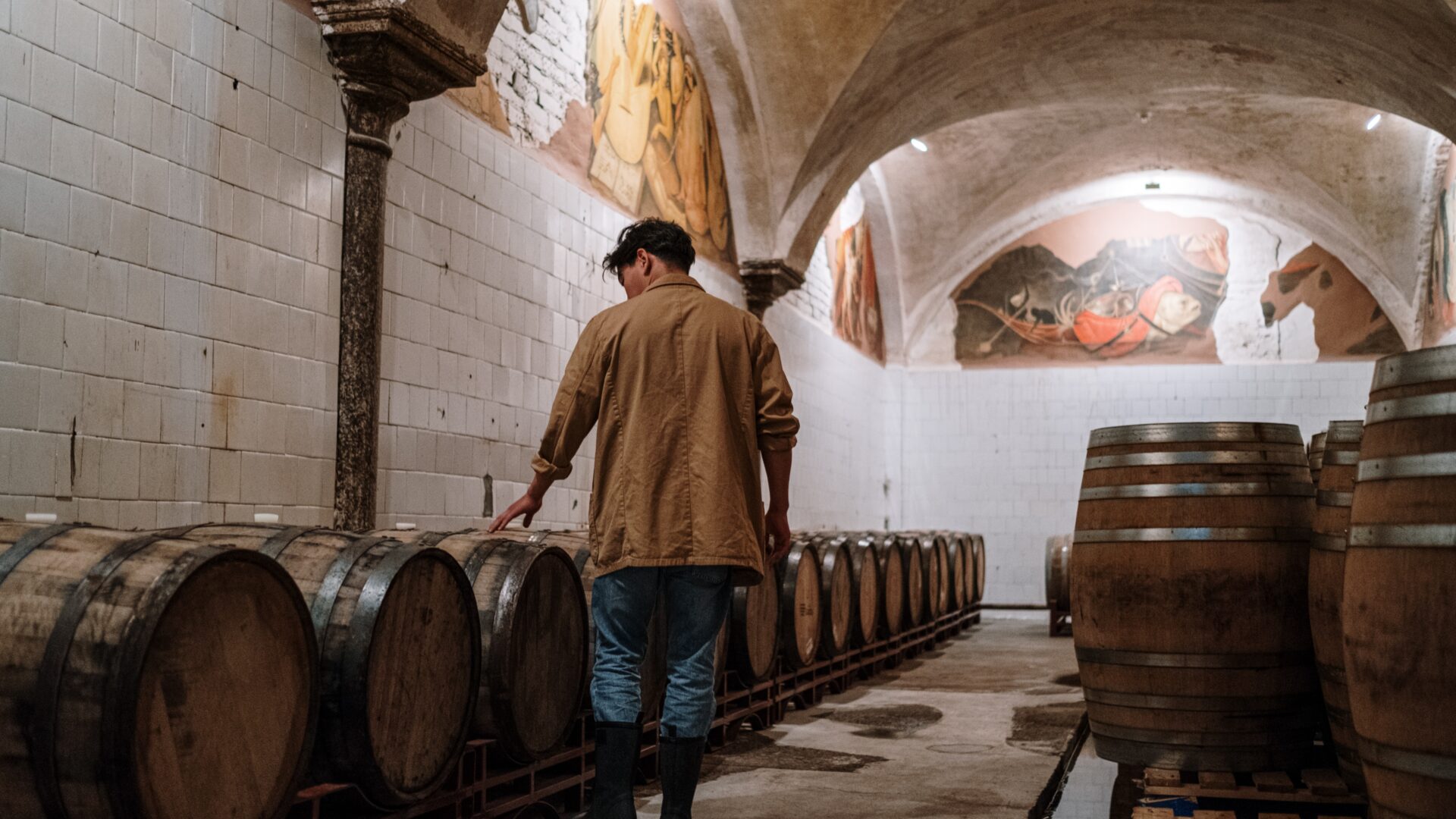From Grape to Glass: A Novice’s Journey Through the Winemaking Process: Wine, a symphony of flavors and aromas, is a testament to the art and science of winemaking. Each bottle tells a story of a journey from grape to glass, a journey that transforms humble grape juice into a beverage that has captivated humanity for millennia. This article aims to guide novice wine drinkers through this fascinating process, providing a practical and engaging overview of the winemaking process. So, pour yourself a glass, sit back, and join us on this vinous adventure.
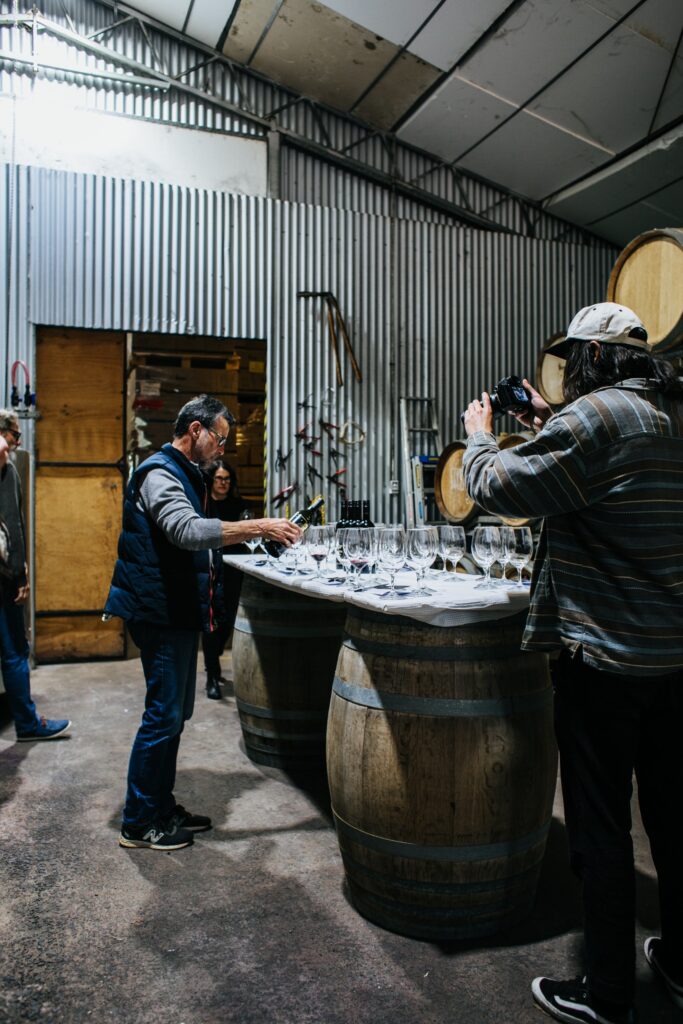
Table of Contents
The Life of a Grapevine
The journey of wine begins in the vineyard with the grapevine. Grapevines follow a yearly cycle, starting with bud break in the spring, flowering, fruit set, veraison (when the grapes change color), and finally, the harvest in the fall. Each stage is crucial and requires careful monitoring and management to ensure the health of the vine and the quality of the grapes.
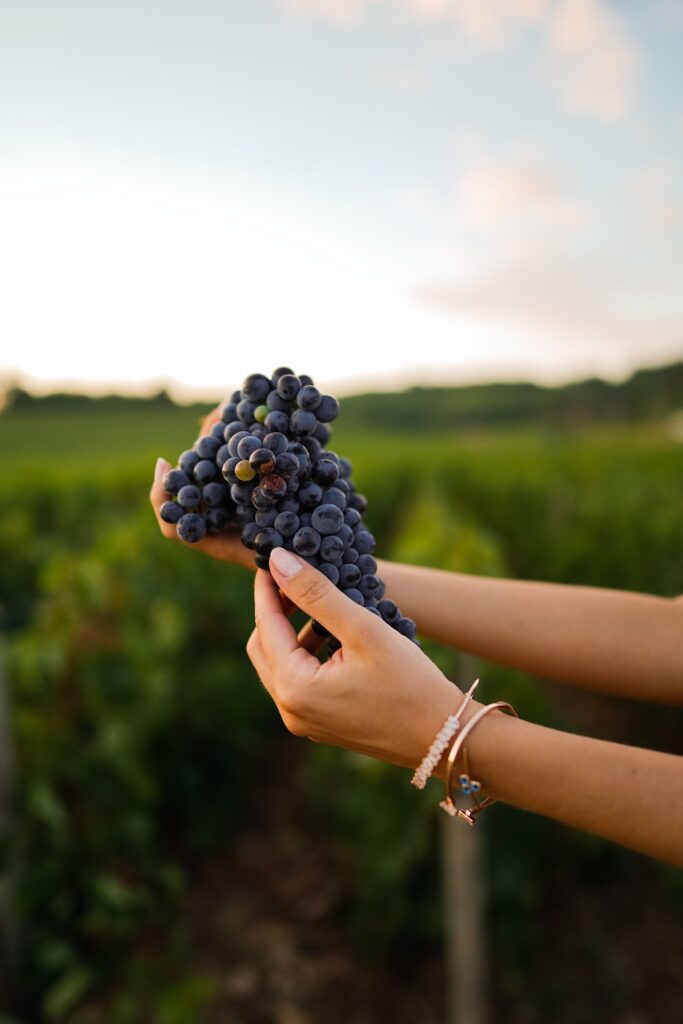
🍷 Fun Fact:
Did you know that there are over 10,000 known varieties of wine grapes worldwide? That’s right! From the well-known Cabernet Sauvignon and Chardonnay to the lesser-known Tannat and Assyrtiko, the world of wine is incredibly diverse. This vast array of grape varieties contributes to the wide range of flavors, aromas, and styles of wine we enjoy today. So, next time you reach for your favorite bottle, remember, it’s just one of the many expressions of the wonderful world of wine!
Harvest: The First Milestone
Harvest is a pivotal moment in the winemaking process. The timing of the harvest can significantly impact the flavor, aroma, and potential alcohol level of the wine. Winemakers must balance sugar levels, acidity, and flavor development in the grapes to determine the optimal time to harvest. Once harvested, the grapes are quickly transported to the winery to preserve their quality.
Timing is Everything: The timing of the harvest is one of the most critical decisions in the winemaking process. Grapes need to reach the perfect balance of sugar, acid, and phenolic maturity to make quality wine. Harvest too early, and the grapes may lack flavor and have high acidity. Harvest too late, and the grapes could have too much sugar, leading to higher alcohol levels in the wine. Winemakers often taste the grapes and measure their sugar levels regularly as harvest approaches to determine the optimal time to pick.
Hand-picking vs. Machine Harvesting: Grapes can be harvested either by hand or by machine. Hand-picking is gentle and allows for careful selection of the best grapes, but it’s labor-intensive and costly. Machine harvesting is more efficient and cost-effective, but it can be rough on the grapes and doesn’t allow for selective picking. The choice between the two often depends on the type of wine being made and the winery’s philosophy.
Night Harvest: Many wineries choose to harvest their grapes at night or in the early morning when temperatures are cooler. This practice helps to preserve the grapes’ fresh flavors and aromas and prevents premature fermentation from heat. It also makes for more comfortable working conditions for the vineyard workers.
Note: The harvest is a crucial stage in the winemaking process that requires careful planning, precise timing, and hard work. It’s the culmination of a year’s worth of effort in the vineyard, setting the stage for the transformation of grapes into wine.
Crushing and Pressing: Releasing the Juice
Upon arrival at the winery, the grapes undergo crushing and pressing to extract the juice. In the past, this was done by foot, but modern wineries use mechanical presses for this process. For white wines, the juice is quickly separated from the skins to prevent color extraction. In contrast, for red wines, the juice is left in contact with the skins to extract color and tannins.
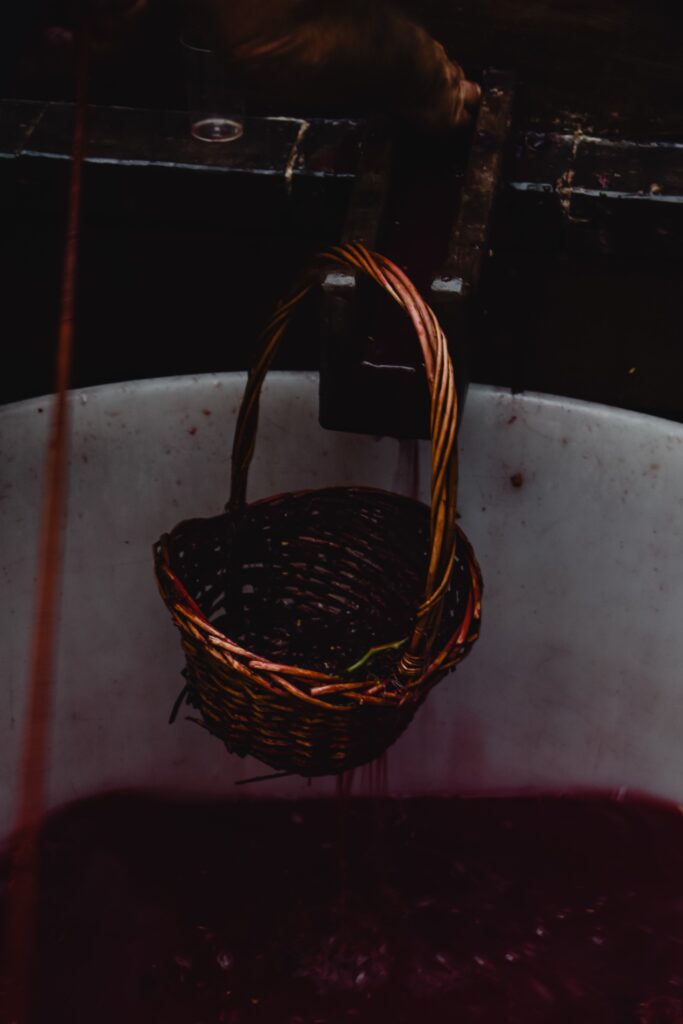
🍷 Fun Fact:
Did you know that the ancient Romans used to stomp on grapes with their bare feet to crush them and extract the juice? This method, known as foot treading, was the standard way of crushing grapes for thousands of years. The human foot is actually quite gentle and can crush the grapes without breaking the seeds, which can release bitter tannins. While most modern wineries now use mechanical presses for efficiency, some wineries, particularly those making Port wine, still practice foot treading as a nod to tradition. So, next time you enjoy a glass of wine, imagine the age-old practice of grape stomping that was once part of its journey from grape to glass!
Fermentation: The Birth of Wine
The extracted juice is then transferred to a fermentation vessel, where yeast is added. The yeast consumes the sugar in the grape juice and converts it into alcohol, a process known as fermentation. This process can take anywhere from a few days to a couple of weeks. Once fermentation is complete, you have wine!
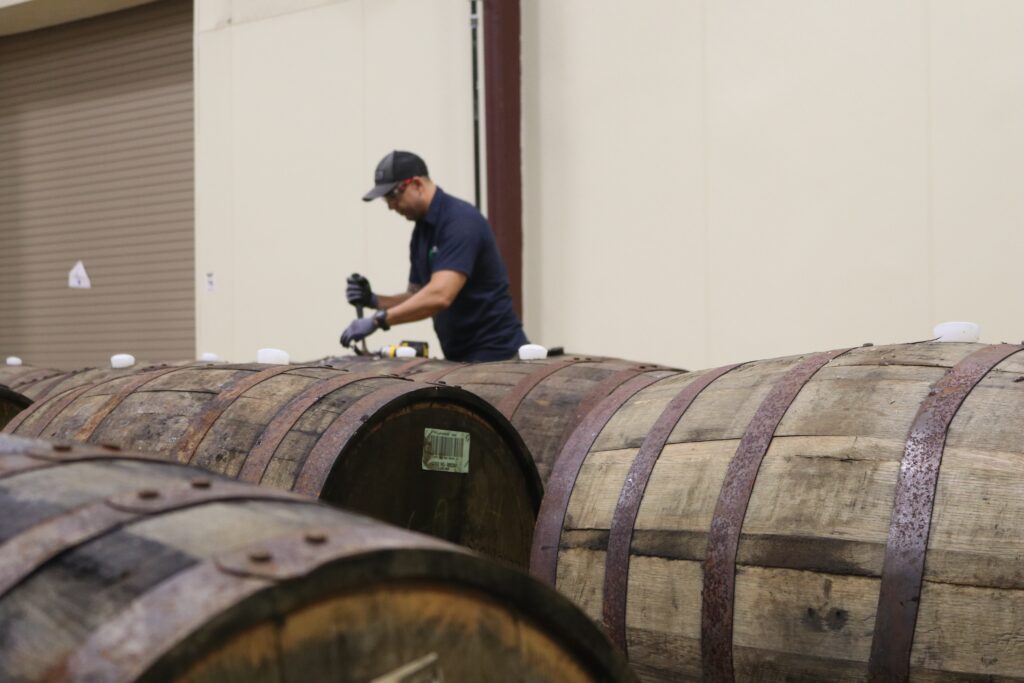
Maturation: Developing Complexity
The newly made wine is then transferred to barrels or tanks for maturation. This stage allows the wine to develop complexity and stability. The choice of maturation vessel can significantly impact the wine’s flavor. For example, oak barrels can impart flavors of vanilla, spice, and toast to the wine.

🍷 Fun Fact:
Wine is truly a global affair! Did you know that there are more than 3,000 distinct wine regions spread across the globe? From the sun-drenched vineyards of California to the steep, terraced slopes of the Mosel in Germany, each wine region has its unique climate, soil, and traditions that shape the wines they produce.
But it doesn’t stop there. Wine is produced in an astonishing 60 countries worldwide! While France, Italy, and Spain are the largest producers, countries as diverse as China, Argentina, Australia, and South Africa also have significant wine industries. Even countries with challenging climates, like England and Canada, are producing high-quality wines. So, wherever you are in the world, there’s likely a wine region not too far away. Cheers to the global diversity of wine!
Beyond Oak: Exploring Five Alternative Vessels for Wine Fermentation
While oak barrels are a traditional and popular choice for fermenting and aging wine, there are several alternatives that winemakers use for various reasons, including cost, desired flavor profile, and sustainability.
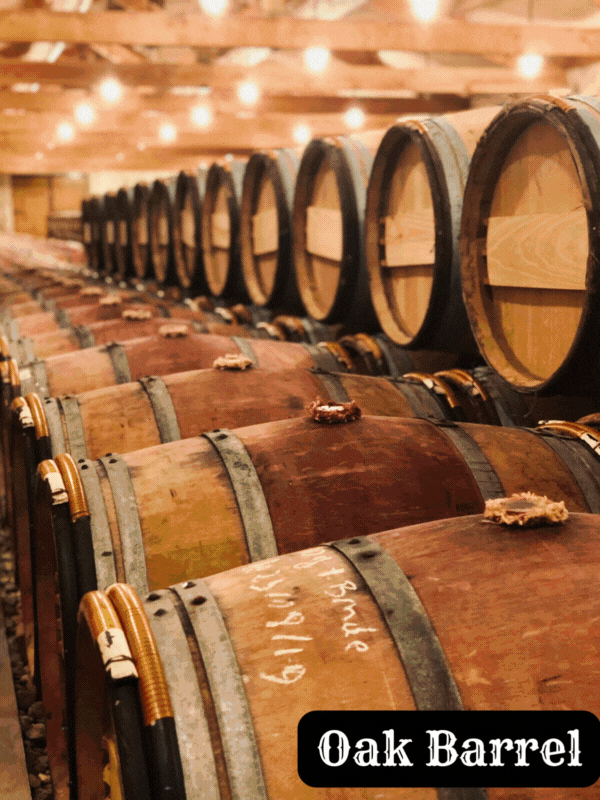
Here are five alternatives to oak barrels:
Stainless Steel Tanks: These are one of the most common alternatives to oak barrels. They are neutral, meaning they don’t impart any flavor to the wine, allowing the fruit’s true character to shine through. They’re also easy to clean and reuse, making them a cost-effective and practical choice for many wineries.
Concrete Tanks: These have been gaining popularity in recent years. Like stainless steel, concrete is neutral, but it allows a small amount of oxygen exchange, similar to oak. Some winemakers believe concrete imparts a certain minerality to the wine.
Glass Carboys: These large glass vessels are often used for small-scale and home winemaking. They’re easy to clean and allow for clear visibility during fermentation.
Clay or Terracotta Amphorae: These are an ancient form of wine storage, used thousands of years ago by civilizations like the Greeks and Romans. They’re experiencing a resurgence in popularity, particularly among natural winemakers. They can impart a unique flavor profile to the wine and are often buried underground to maintain a stable temperature.
Flex Tanks or Plastic Bins: These are another cost-effective alternative, often used for large-scale fermentation. They’re easy to clean and move around, but like stainless steel, they don’t impart any flavor to the wine.
Note: Each of these alternatives has its pros and cons, and the choice often depends on the winemaker’s goals, resources, and personal philosophy.
Bottling: The Final Step
After maturation, the wine is filtered to remove any remaining solids and then bottled. The wine may continue to age in the bottle, developing further complexity over time. It’s worth noting that not all wines are meant for long-term aging; many are intended to be enjoyed within a few years of bottling.
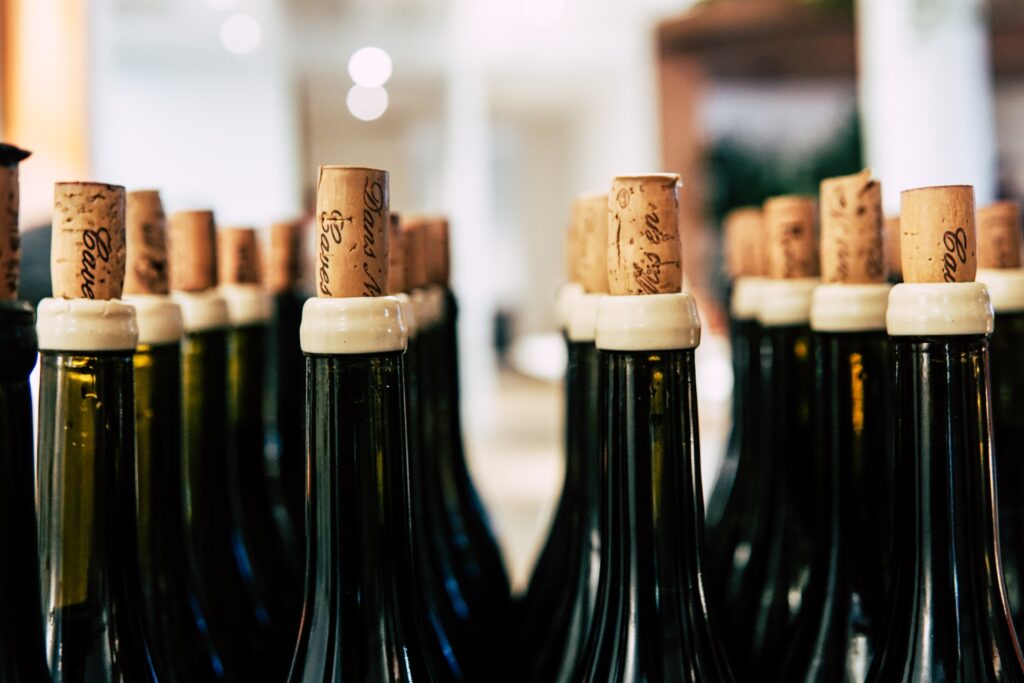
Note: After maturation, the wine is filtered to remove any remaining solids and then bottled. The wine may continue to age in the bottle, developing further complexity over time. It’s worth noting that not all wines are meant for long-term aging; many are intended to be enjoyed within a few years of bottling.
Securing the Elixir: The Importance of Bottling, Corking, and Proper Wine Storage
The journey of wine doesn’t end once it’s fermented and aged. The final steps – bottling, corking, and storage – are equally crucial to ensure the wine reaches the consumer in optimal condition…
Bottling: The Right Vessel
Choosing the right bottle for wine is more than an aesthetic decision. The shape and color of the bottle can protect the wine from light, which can degrade the wine over time. Darker bottles, such as amber or green, offer more protection against light. The bottle’s size can also impact the aging process. Larger bottles have a smaller air-to-wine ratio, which can slow down the aging process and potentially lead to longer-lived wines.
Corking: Sealing the Deal
The closure, often a cork, plays a vital role in preserving the wine’s quality after bottling. Traditional cork stoppers allow a tiny amount of oxygen exchange, which can help the wine age and develop over time. However, natural corks can sometimes be prone to ‘cork taint,’ a musty off-flavor caused by a compound called TCA.
Alternatives to cork, such as screw caps and synthetic corks, have gained popularity in recent years. Screw caps are airtight, making them a good choice for wines meant to be consumed young, while synthetic corks offer a middle ground, with less risk of cork taint.
Storage: Preserving Quality
Proper storage after bottling is essential to maintain the wine’s quality. Wine should be stored at a constant, cool temperature, ideally around 55°F (13°C). Fluctuations in temperature can cause the wine to expand and contract, potentially leading to leakage or spoilage.
Wine bottles should also be stored on their sides to keep the cork moist, preventing it from drying out and allowing air to enter the bottle. Finally, wines should be stored in a dark, vibration-free environment to protect them from light and disturbance, which can negatively impact the wine’s quality over time.
Note: The bottling, corking, and storage of wine are critical steps in the winemaking process, ensuring that the wine you enjoy is at its best, whether it’s a young, vibrant white or a mature, complex red
Final Thoughts'
The journey from grape to glass is a complex process that requires skill, patience, and a deep understanding of viticulture and winemaking. Each step, from the growth of the grapevines to the bottling of the wine, contributes to the final product’s flavor, aroma, and overall quality. As a novice wine drinker, understanding this process can enhance your appreciation of wine and deepen your enjoyment of each sip. Remember, wine is a journey of discovery, so don’t be afraid to explore, ask questions, and savor the experience. Cheers to your wine adventure!
Note: This article is a brief overview of the winemaking process. For a more in-depth understanding, consider enrolling in a wine-tasting course or visiting a local winery.

